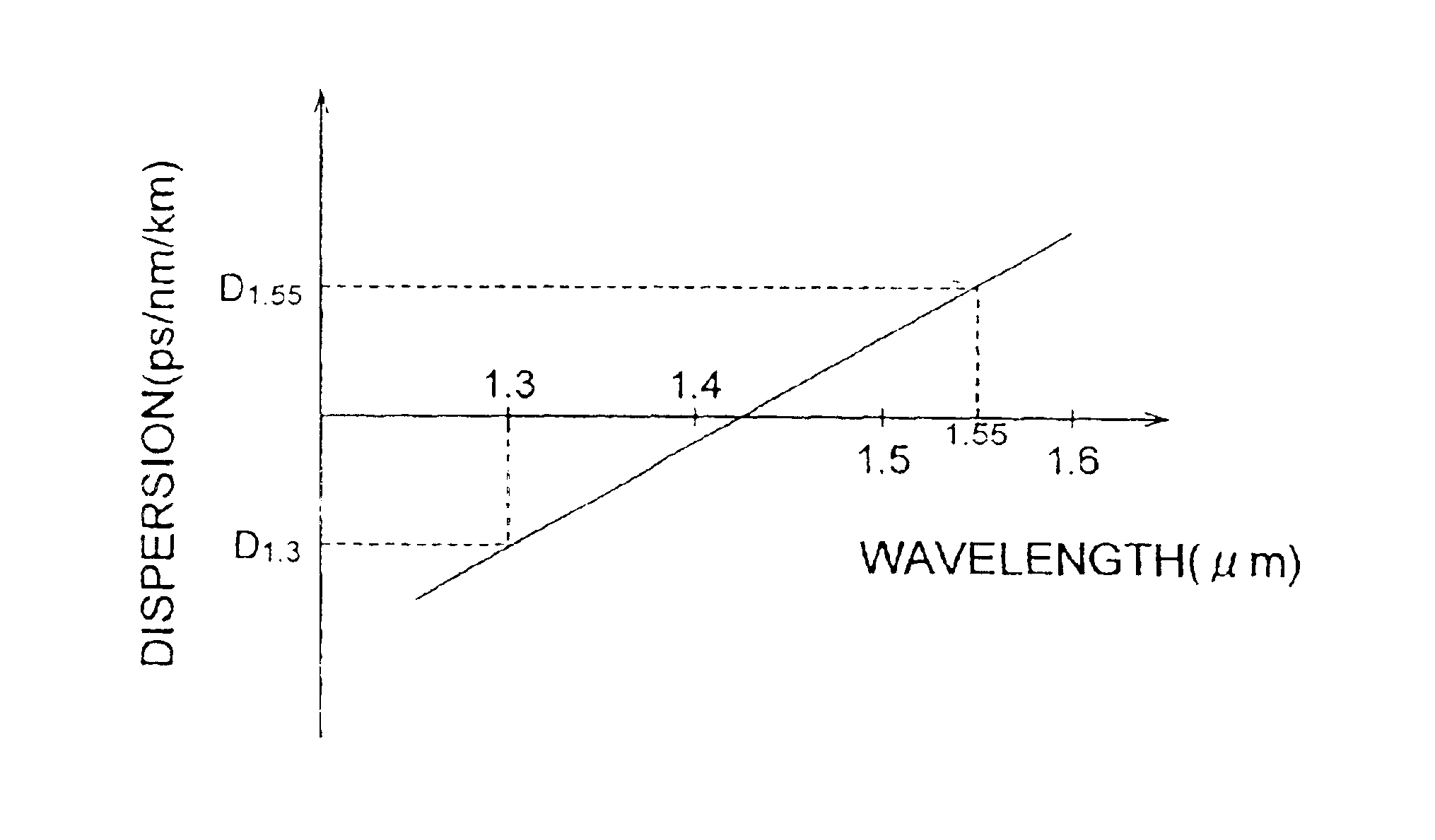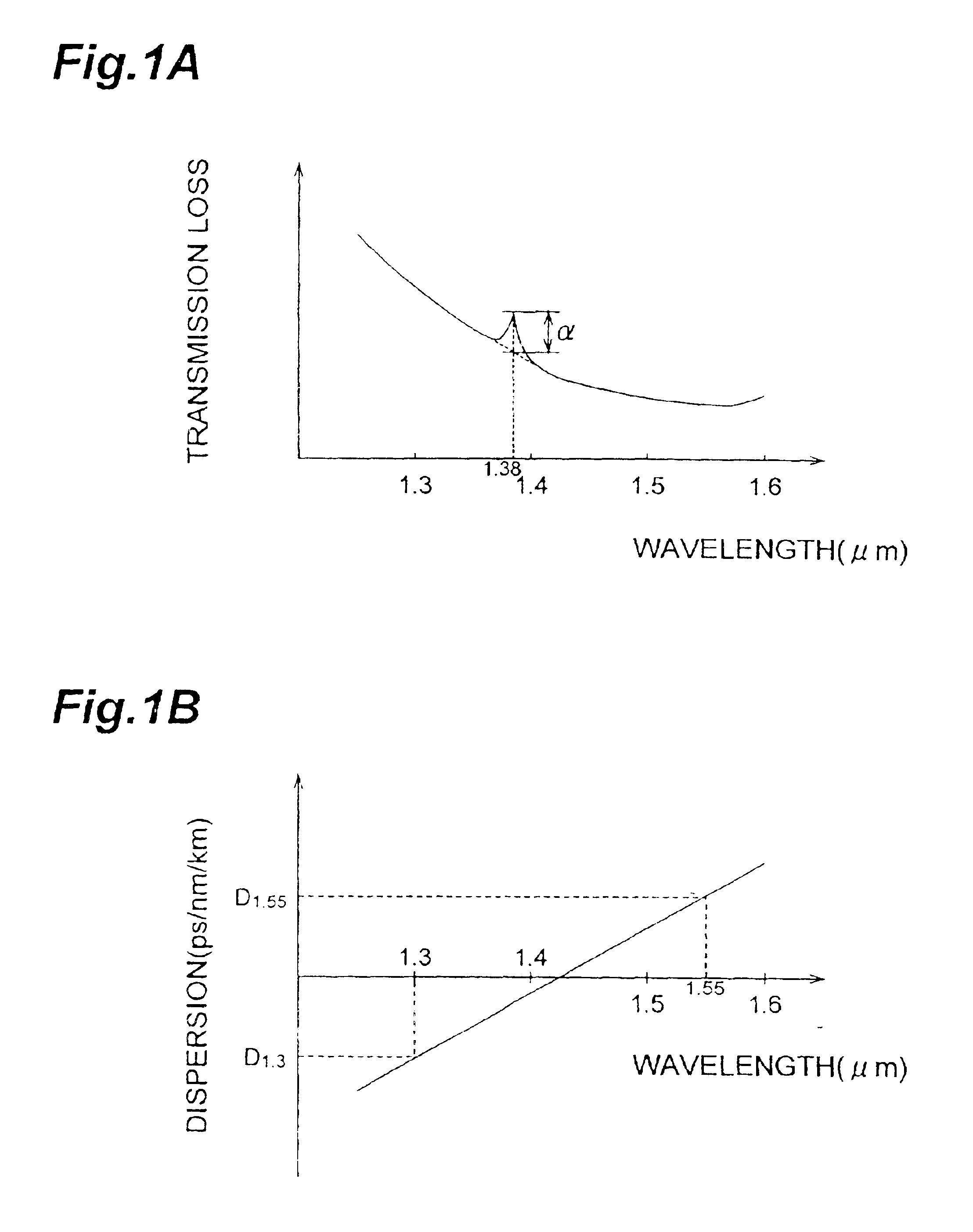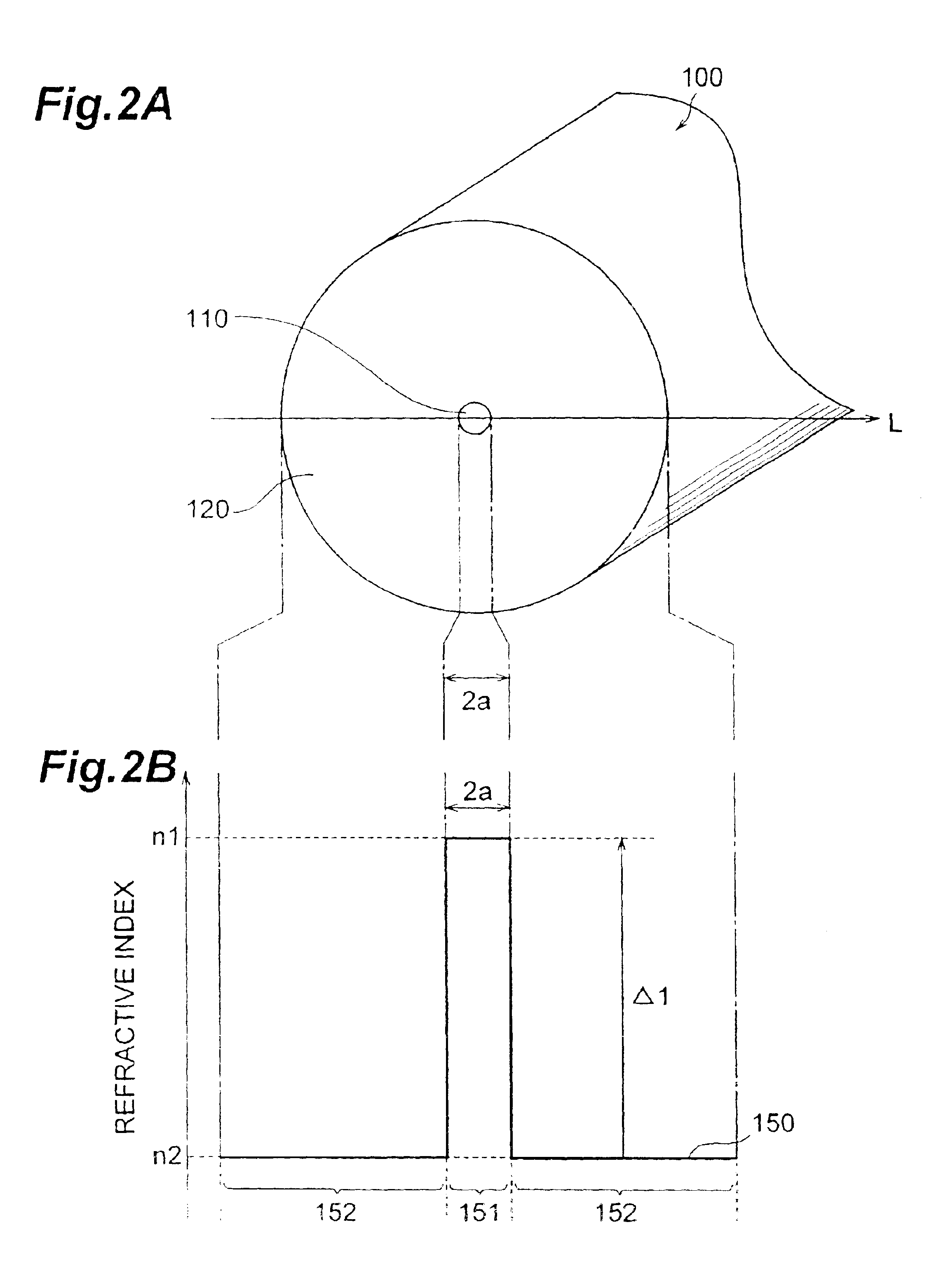Optical fiber and optical transmission system including the same
a technology applied in the field of optical fiber and optical transmission system, can solve the problems of difficult to make such an optical fiber having a very large relative refractive index difference, the absolute value of dispersion becomes so large, and achieves the effect of efficient transmission and efficient transmission
- Summary
- Abstract
- Description
- Claims
- Application Information
AI Technical Summary
Benefits of technology
Problems solved by technology
Method used
Image
Examples
third embodiment
(Third Embodiment)
FIG. 4 is a refractive index profile of an optical fiber according to the third embodiment. The basic configuration of the optical fiber according to the third embodiment is also similar to that of the first embodiment shown in FIG. 2A, but is different therefrom in that the core region 110 shown in FIG. 2A is constituted by a first core and a second core. Referring to FIG. 2A for explaining the configuration of the optical fiber according to the third embodiment, the core region 110 comprises a first core, with an outside diameter 2a, having a maximum refractive index n1 at the optical axis center; and a second core with an outside diameter 2b, provided on the outer periphery of the first core, having are fractive index n2(<n1). The cladding region 120 provided on the outer periphery of the second core has a refractive index n1 (<n2).
As for the relationship between the refractive index profile 350 shown in FIG. 4 and the cross-sectional structure shown i...
fourth embodiment
(Fourth Embodiment)
FIG. 5 is a refractive index profile of an optical fiber according to the fourth embodiment. As in the first embodiment shown in FIG. 2A, the optical fiber according to the fourth embodiment comprises a core region 110 and a cladding region 120. However, it differs from the above-mentioned third embodiment in that the cladding region 120 comprises a depressed structure. Referring to FIG. 2A for explaining the configuration of the optical fiber according to the fourth embodiment, as in the third embodiment, the core region 110 comprises a first core, with an outside diameter 2a, having a maximum refractive index n1 at the optical axis center; and a second core with an outside diameter 2b, provided on the outer periphery of the first core, having a refractive index n2 (<n1). The cladding region 120 comprises an inner cladding with an outside diameter 2c, provided in contact with the outer periphery of the second core, having a refractive index n4 (<n2); an...
fifth embodiment
(Fifth Embodiment)
FIG. 6 is a refractive index profile of an optical fiber according to the fifth embodiment. The basic configuration of the optical fiber according to the fifth embodiment is also similar to the first embodiment shown in FIG. 2A, and is constituted by a core region 110 and a cladding region 120. As for the configuration of the optical fiber according to the fifth embodiment shown in FIG. 2A, the core region 110 comprises a first core, with an outside diameter 2a, extending along a predetermined axis and having a refractive index n1; a second core with an outside diameter 2b, provided on the outer periphery of the first core, having a refractive index n2 (<n1); and a third core with an outside diameter 2c, provided on the outer periphery of the second core, having a refractive index n3 (>n2, <n1). The cladding region 120 provided on the outer periphery of the third core 3 has a refractive index n4 (<n1, <n3).
As for the relationship between the ref...
PUM
 Login to View More
Login to View More Abstract
Description
Claims
Application Information
 Login to View More
Login to View More - R&D
- Intellectual Property
- Life Sciences
- Materials
- Tech Scout
- Unparalleled Data Quality
- Higher Quality Content
- 60% Fewer Hallucinations
Browse by: Latest US Patents, China's latest patents, Technical Efficacy Thesaurus, Application Domain, Technology Topic, Popular Technical Reports.
© 2025 PatSnap. All rights reserved.Legal|Privacy policy|Modern Slavery Act Transparency Statement|Sitemap|About US| Contact US: help@patsnap.com



